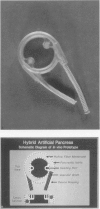Abstract
Previously the authors reported on a Hybrid Artificial Pancreas device that maintained patent vascular anastomoses in normal dogs and, when seeded with allogeneic canine islets, maintained normal fasting blood sugars (FBS) in diabetic pancreatectomized dogs. Eventual failure of these devices was believed to be related to loss of islet viability and/or insufficient islet mass. The current study evaluates the effect of increased islet mass produced by implantation of two islet-seeded devices in pancreatectomized dogs and compares the results with those from dogs that received a single device. Twelve of fifteen dogs receiving single devices showed initial function as determined by elimination or reduction of exogenous insulin requirement; four showed initial function and seven showed extended function (100 to 284 days). Excessive weight loss (more than 20%), despite normal FBS and insulin dependence, required that four animals in this latter group be killed. Devices seeded with xenogeneic islets have met with limited success. One dog that received two bovine islet-seeded devices achieved function for more than 100 days; the remaining bovine-seeded devices (n = 8) functioned for only 3 to 16 days. Porcine islet-seeded devices were assessed by intravenous glucose tolerance tests (IVGTT). Recipients of two devices seeded with allogeneic islets demonstrated improved IVGTT results when compared to those from pancreatectomized dogs and recipients of single devices but were abnormal when compared to intact animals. Histologic examination of device and autopsy material from all failed experiments was performed and showed no mononuclear cell infiltration of the islet chamber or vascular graft material, only a few incidence of device thrombosis, and varying degrees of islet viability as judged by morphologic and immunohistochemical evaluation. The authors believe they have demonstrated progress toward the development and clinical applicability of the Hybrid Artificial Pancreas.
Full text
PDF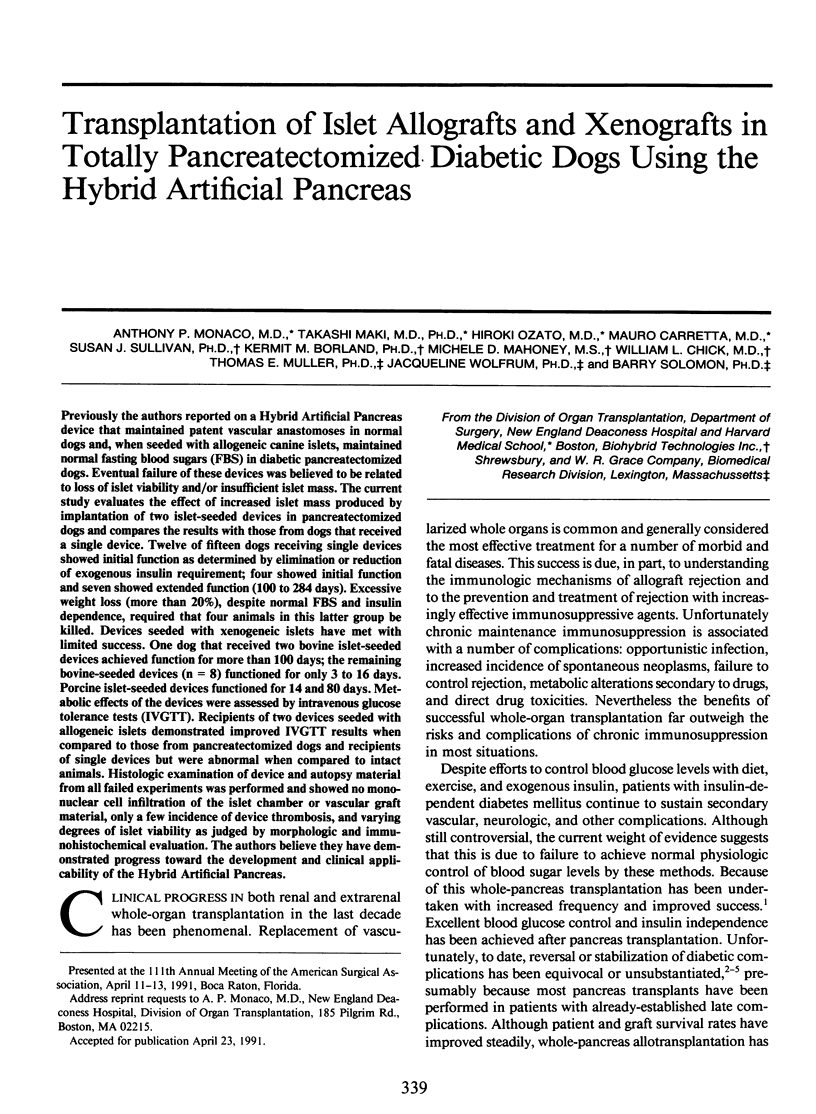
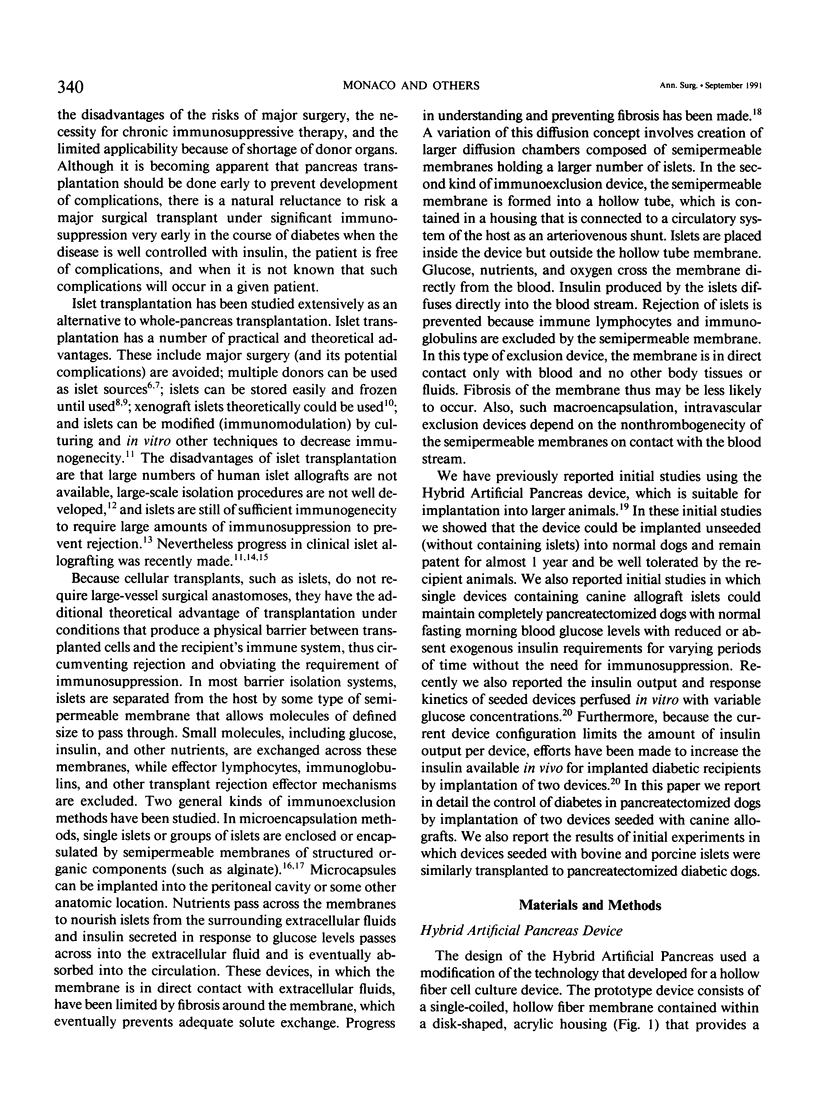
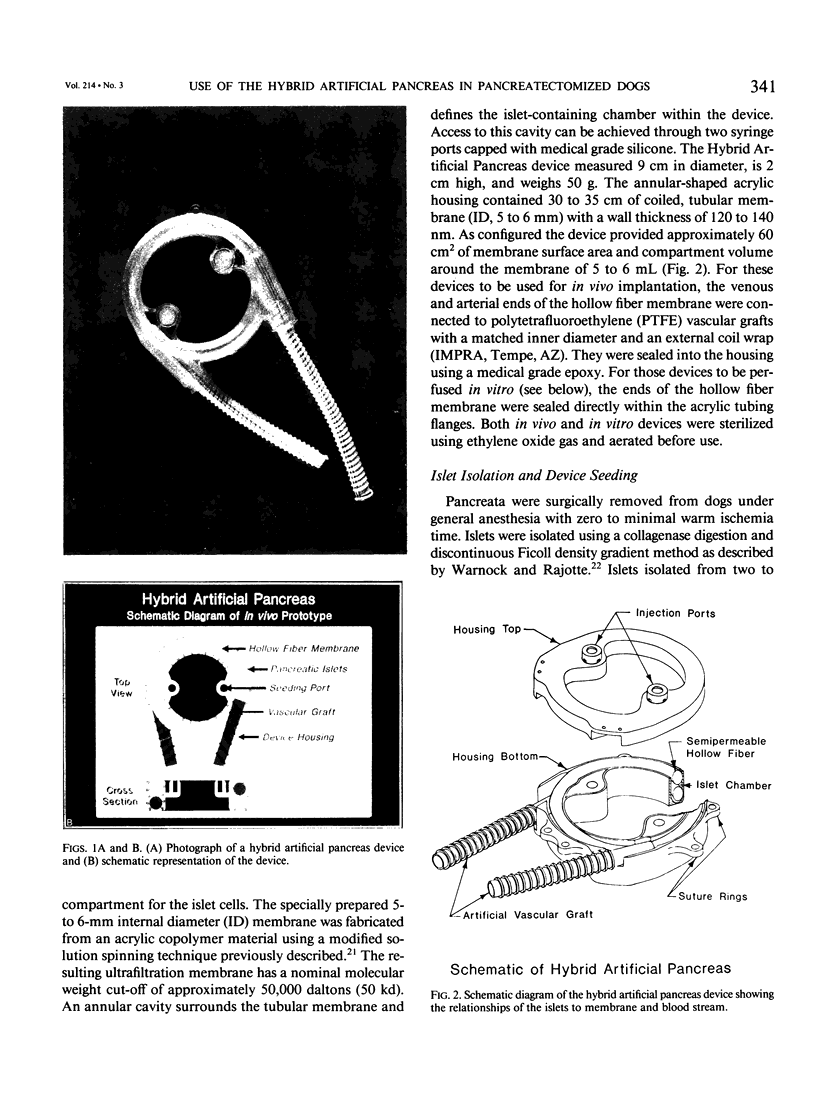
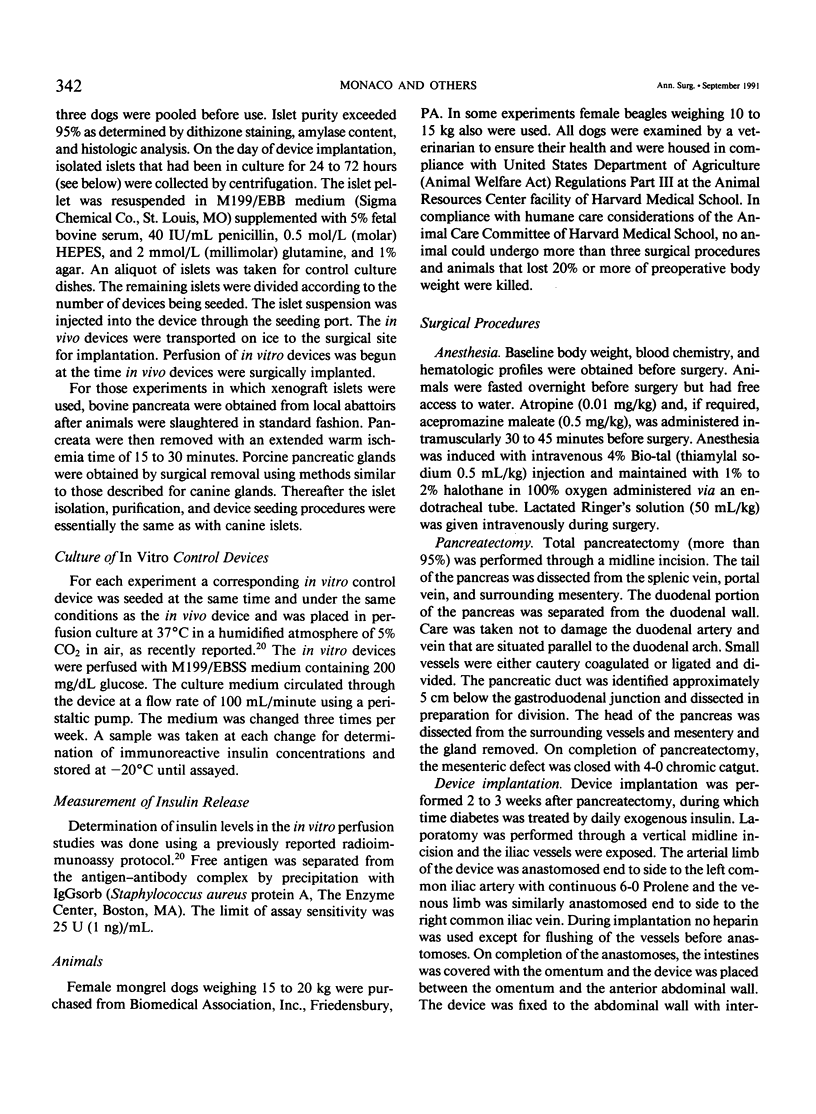
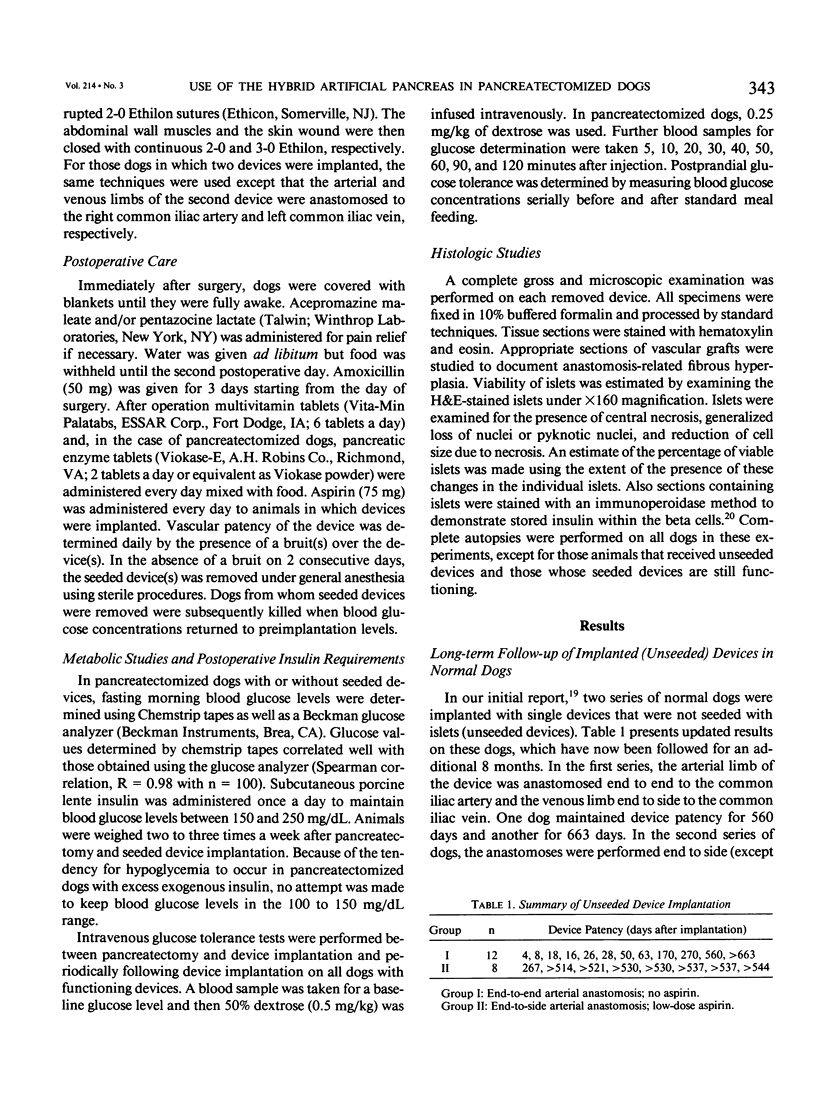
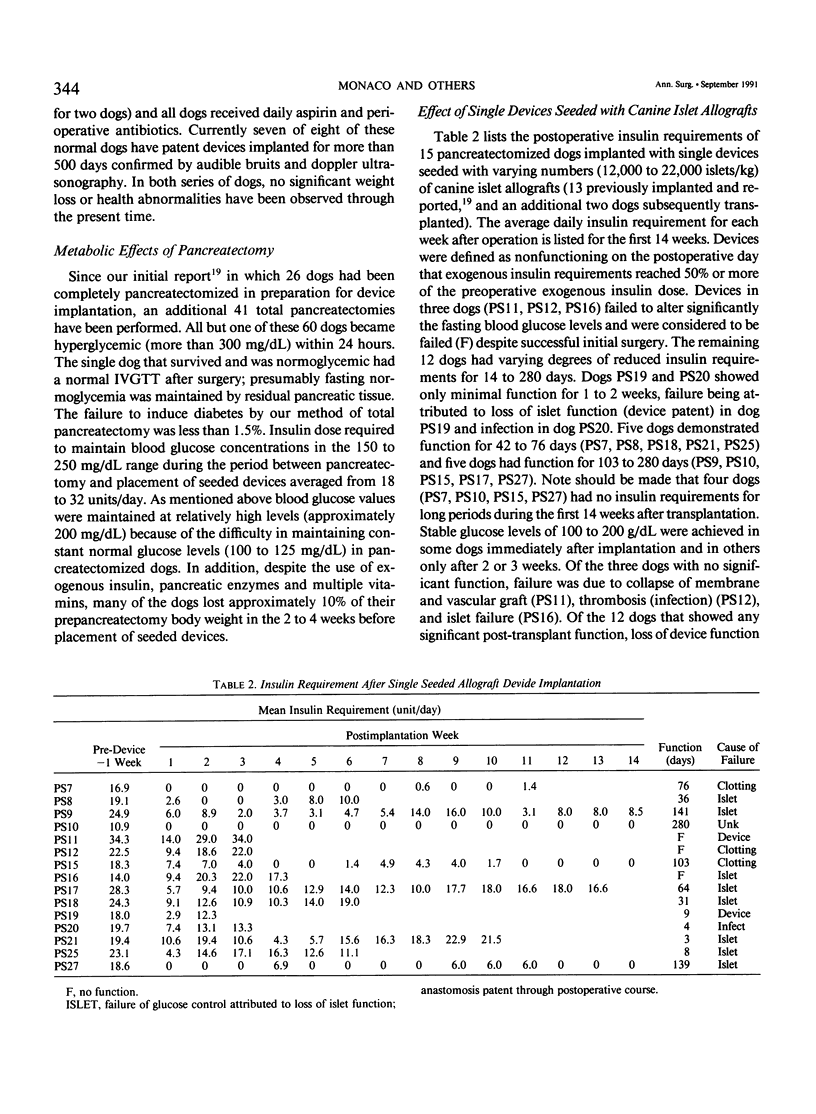
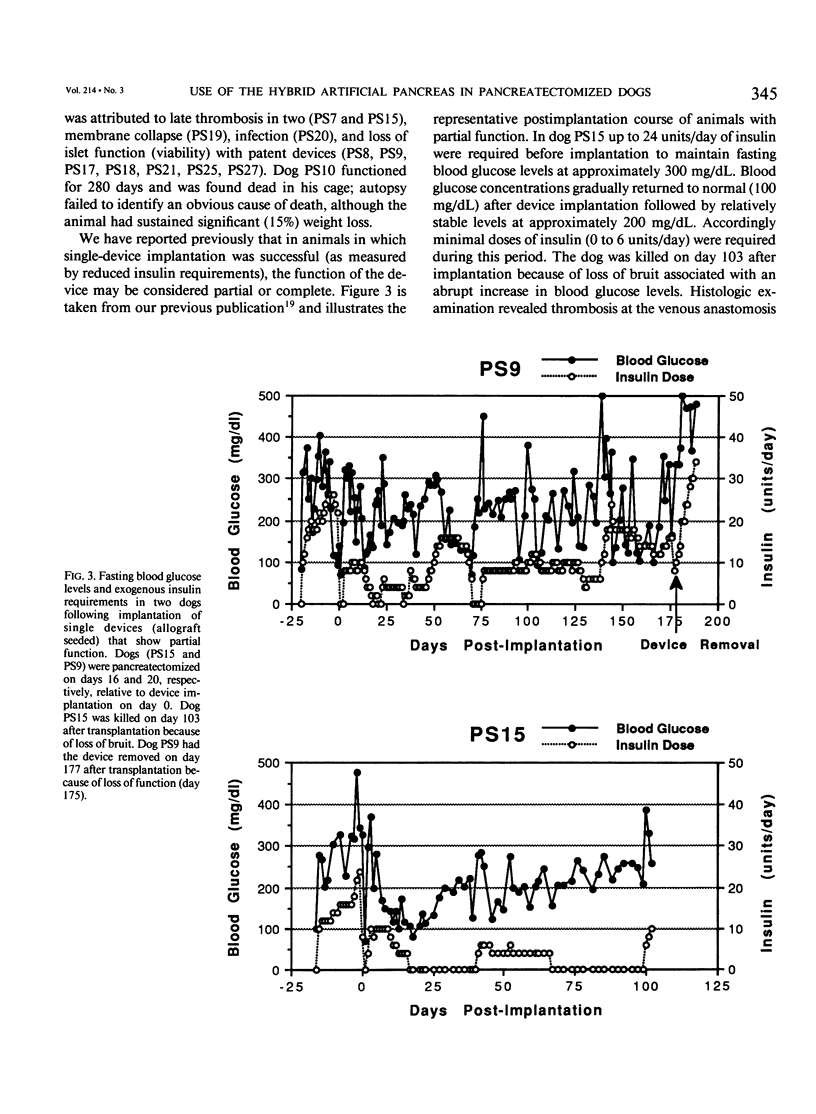

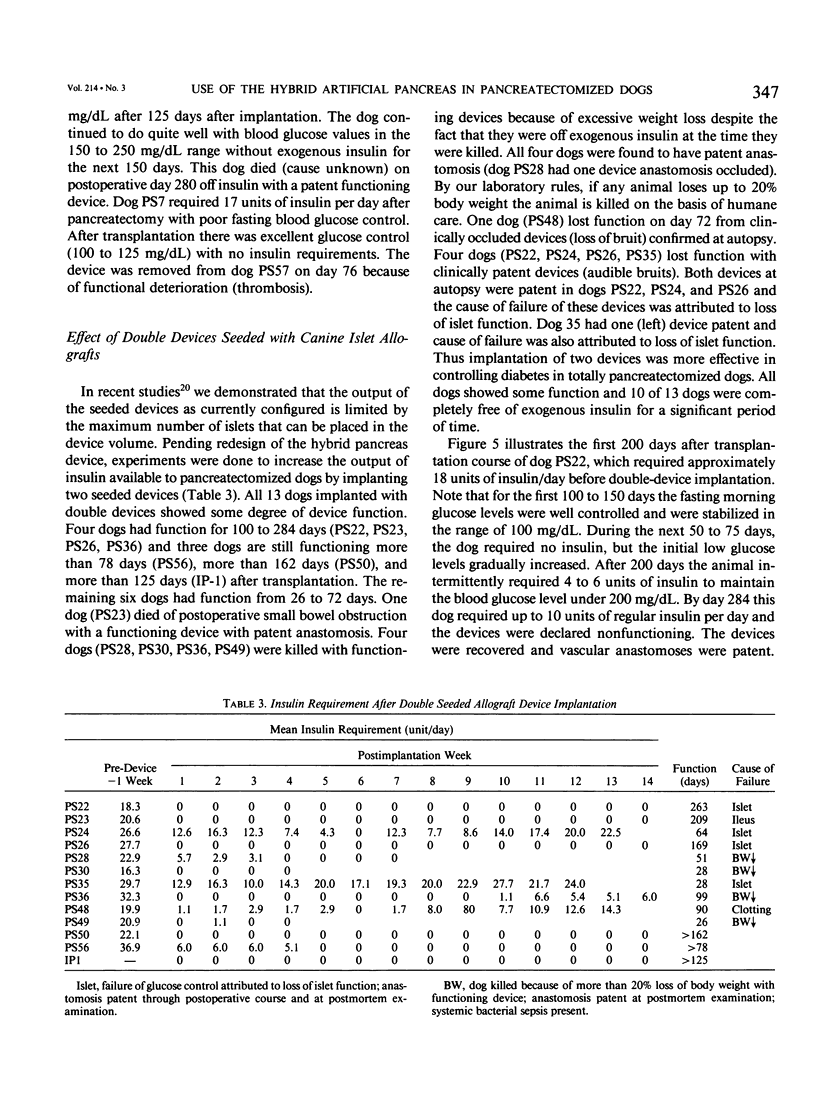
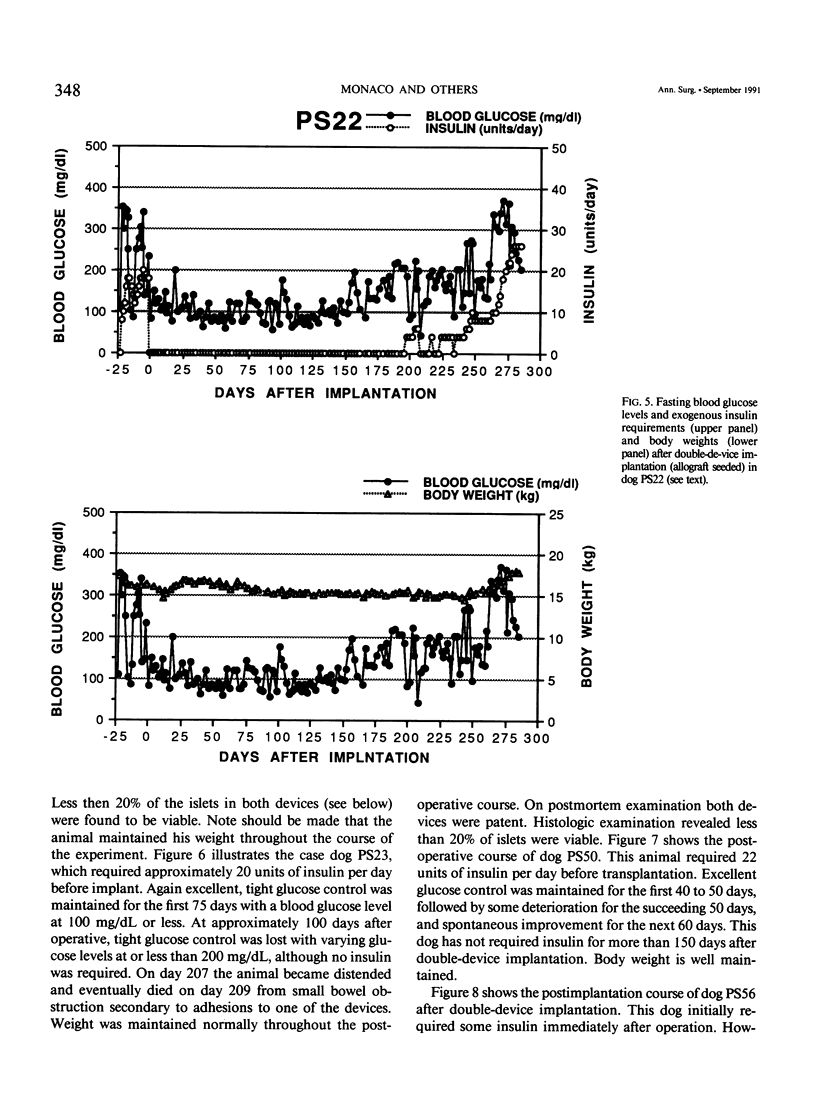
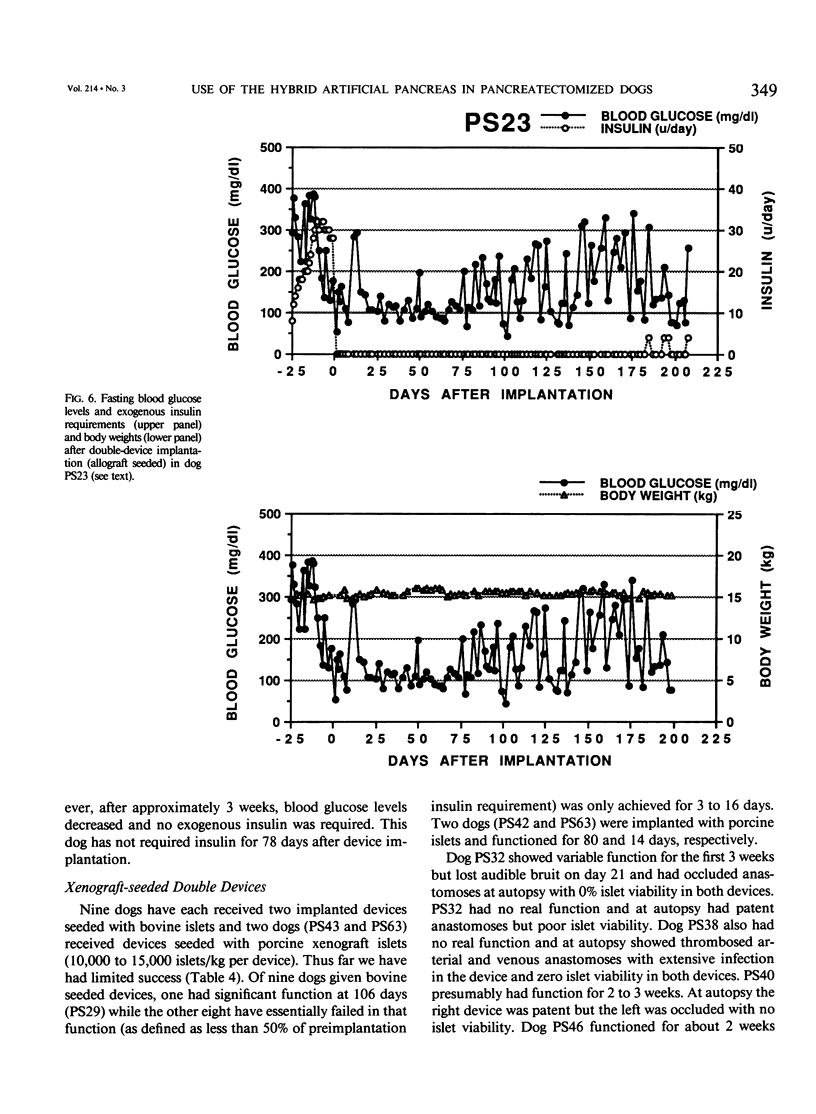
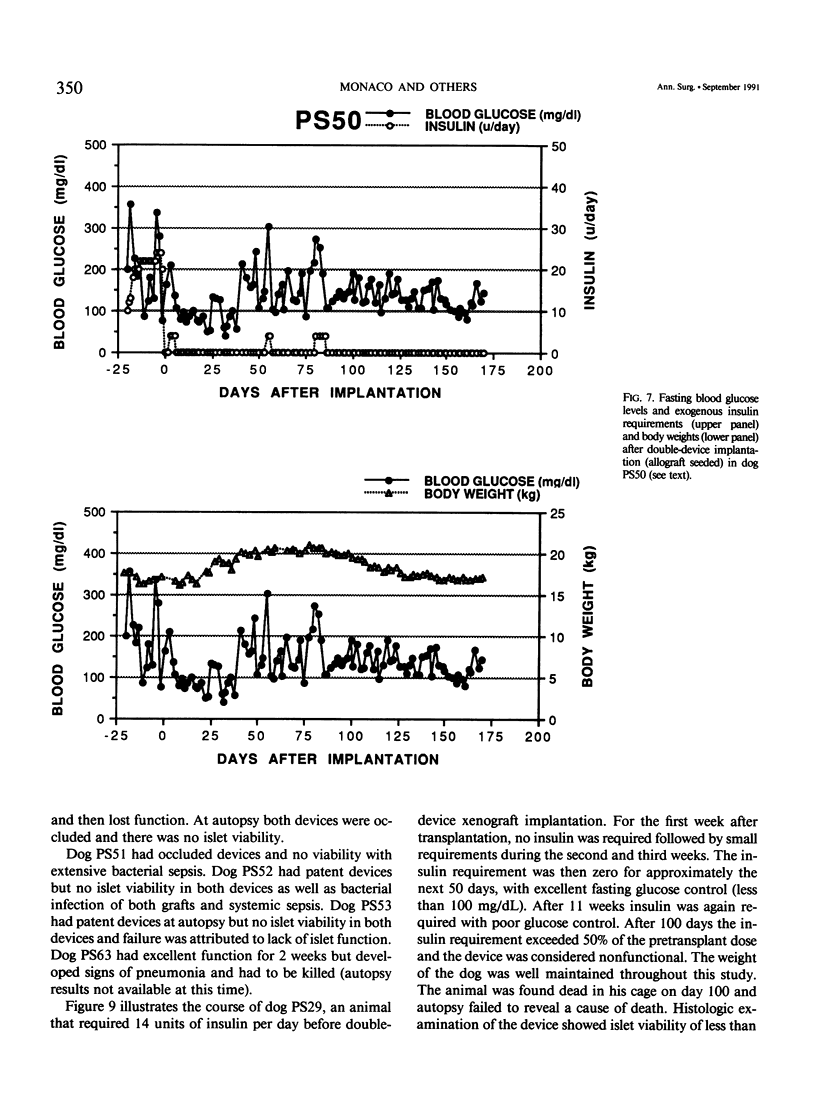
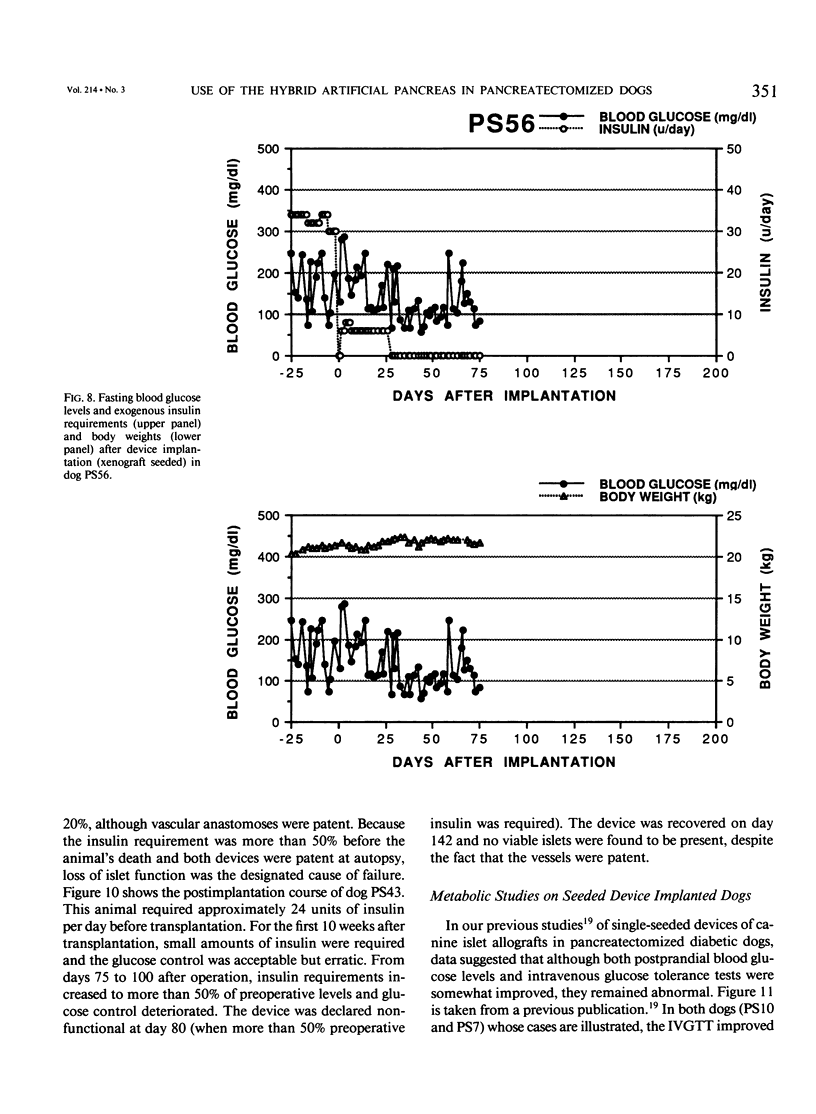

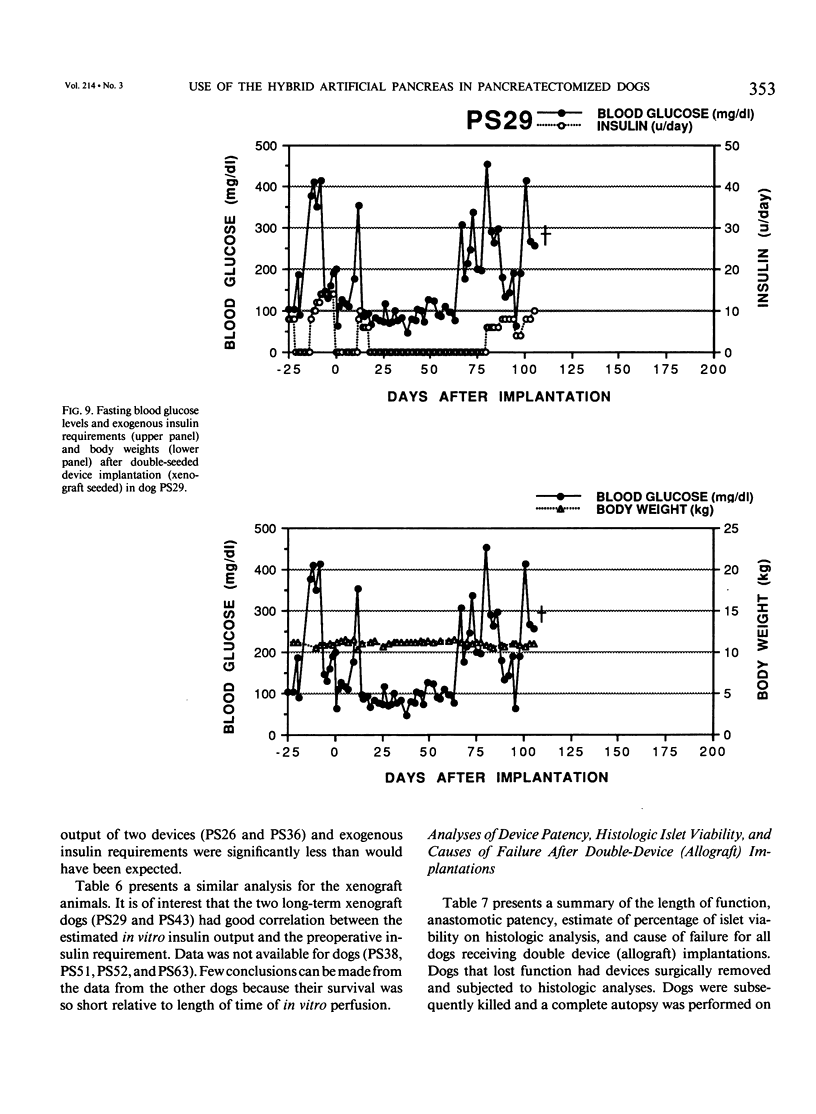
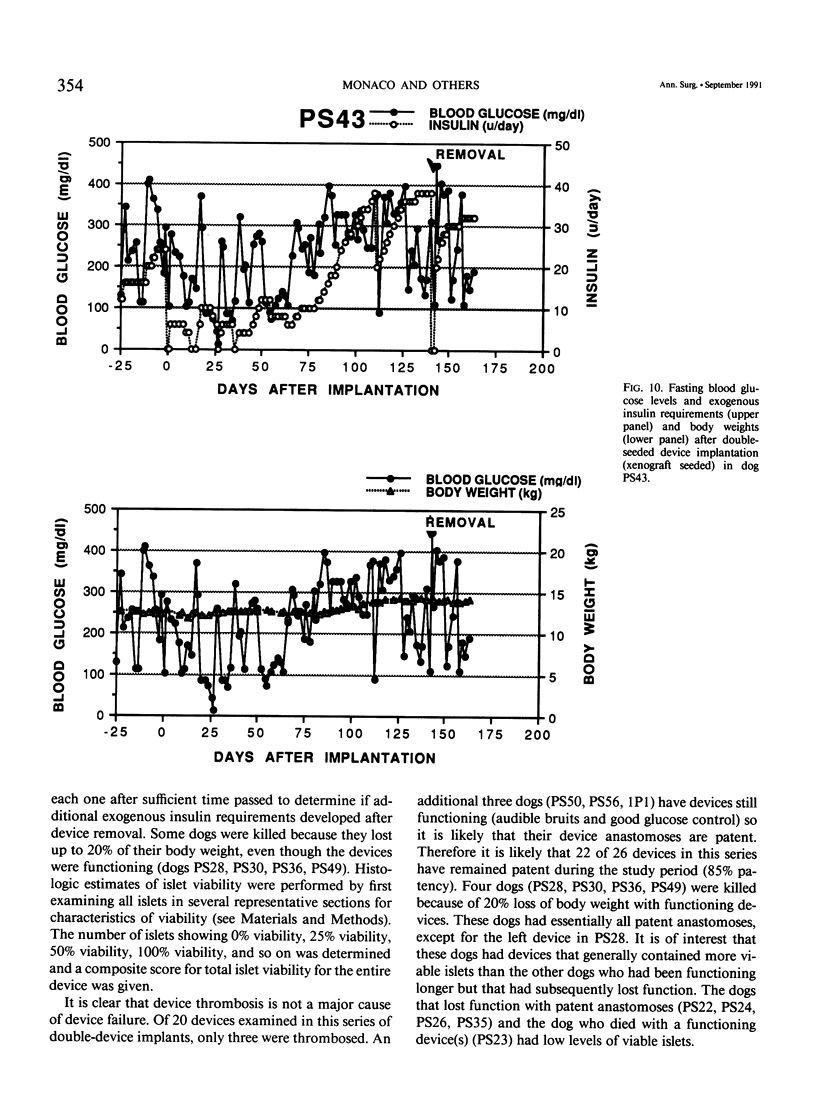
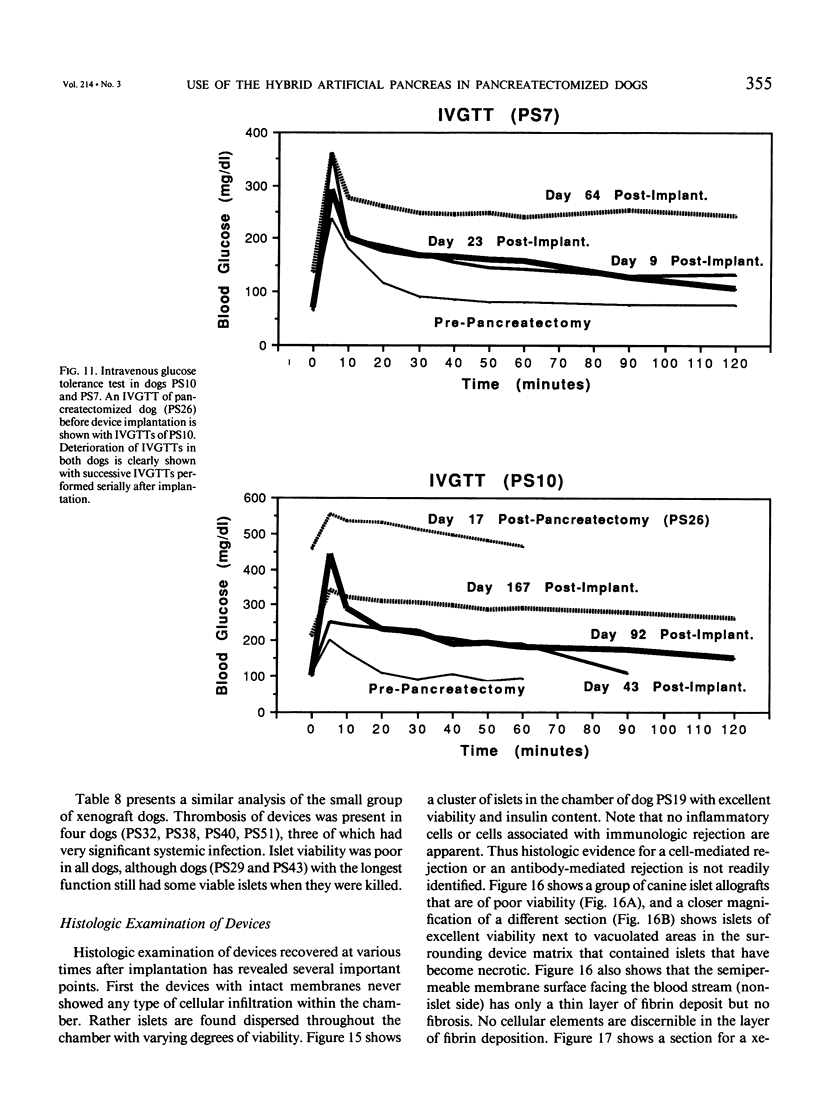
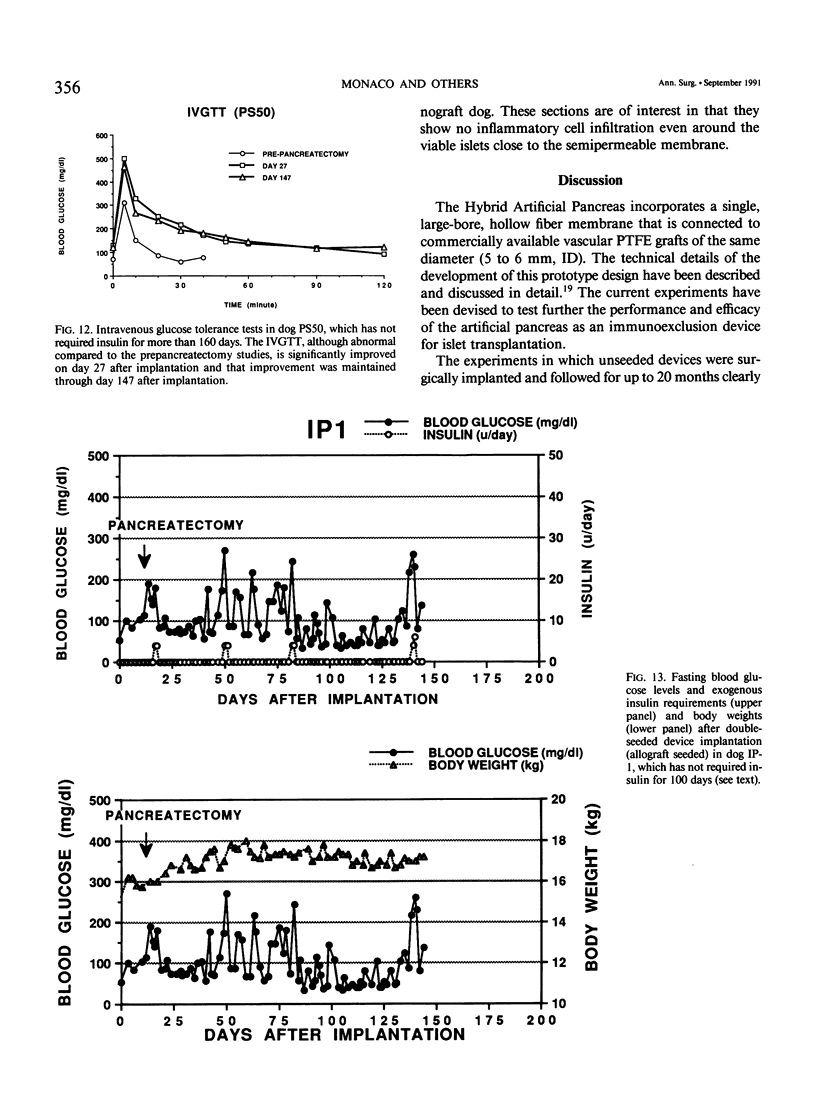

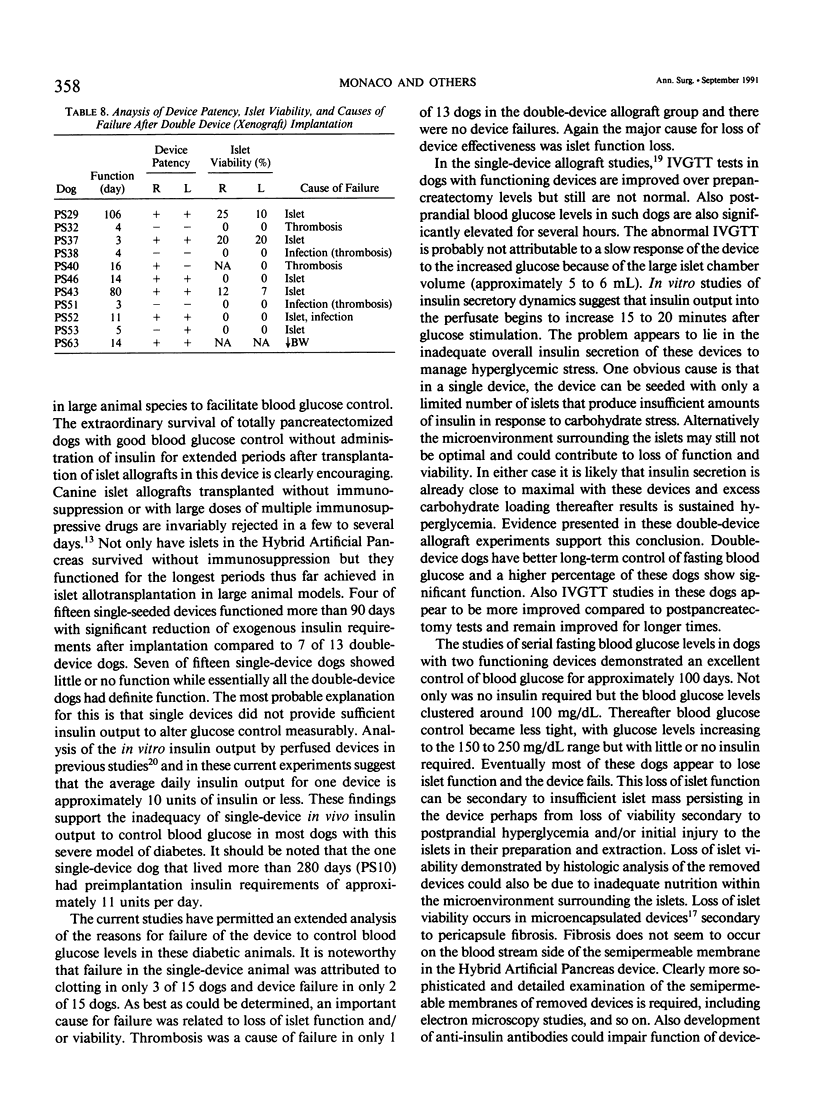
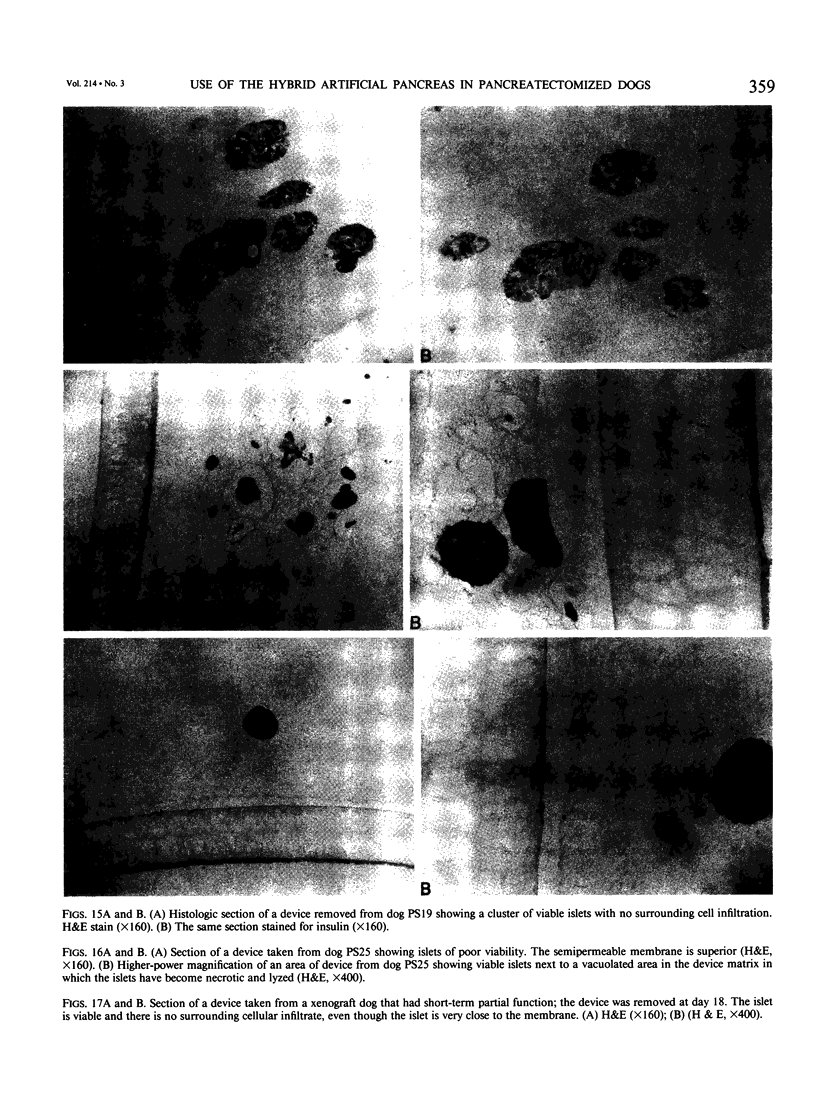
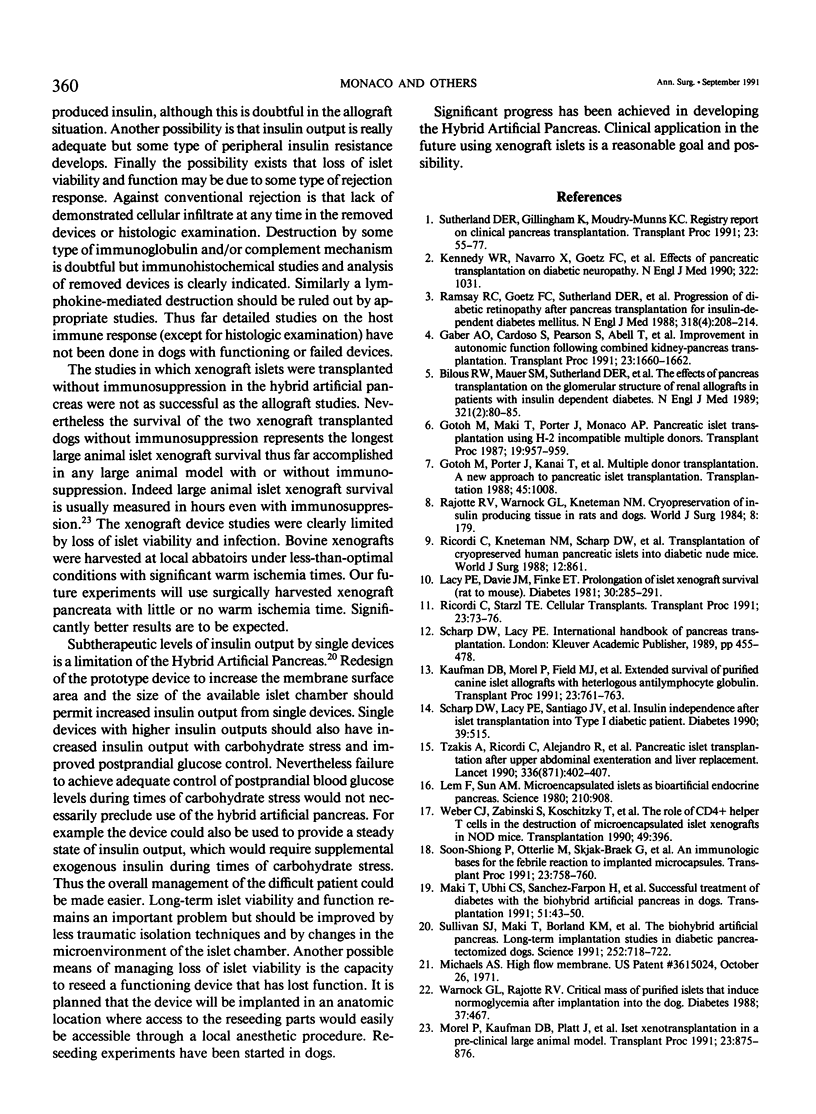
Images in this article
Selected References
These references are in PubMed. This may not be the complete list of references from this article.
- Bilous R. W., Mauer S. M., Sutherland D. E., Najarian J. S., Goetz F. C., Steffes M. W. The effects of pancreas transplantation on the glomerular structure of renal allografts in patients with insulin-dependent diabetes. N Engl J Med. 1989 Jul 13;321(2):80–85. doi: 10.1056/NEJM198907133210204. [DOI] [PubMed] [Google Scholar]
- Gaber A. O., Cardoso S., Pearson S., Abell T., Gaber L., Hathaway D., Alakkad M., Cromer R., Britt L. G. Improvement in autonomic function following combined pancreas-kidney transplantation. Transplant Proc. 1991 Feb;23(1 Pt 2):1660–1662. [PubMed] [Google Scholar]
- Gotoh M., Maki T., Porter J., Monaco A. P. Pancreatic islet transplantation using H-2 incompatible multiple donors. Transplant Proc. 1987 Feb;19(1 Pt 2):957–959. [PubMed] [Google Scholar]
- Gotoh M., Porter J., Kanai T., Monaco A. P., Maki T. Multiple donor allotransplantation. A new approach to pancreatic islet transplantation. Transplantation. 1988 Jun;45(6):1008–1012. [PubMed] [Google Scholar]
- Kaufman D. B., Morel P., Field M. J., Roney M., Condie R., Sutherland D. E. Extended survival of purified canine islet allografts with heterologous antilymphocyte globulin. Transplant Proc. 1991 Feb;23(1 Pt 1):761–763. [PubMed] [Google Scholar]
- Kennedy W. R., Navarro X., Goetz F. C., Sutherland D. E., Najarian J. S. Effects of pancreatic transplantation on diabetic neuropathy. N Engl J Med. 1990 Apr 12;322(15):1031–1037. doi: 10.1056/NEJM199004123221503. [DOI] [PubMed] [Google Scholar]
- Lacy P. E., Davie J. M., Finke E. H. Prolongation of islet xenograft survival (rat to mouse). Diabetes. 1981 Apr;30(4):285–291. doi: 10.2337/diab.30.4.285. [DOI] [PubMed] [Google Scholar]
- Lim F., Sun A. M. Microencapsulated islets as bioartificial endocrine pancreas. Science. 1980 Nov 21;210(4472):908–910. doi: 10.1126/science.6776628. [DOI] [PubMed] [Google Scholar]
- Maki T., Ubhi C. S., Sanchez-Farpon H., Sullivan S. J., Borland K., Muller T. E., Solomon B. A., Chick W. L., Monaco A. P. Successful treatment of diabetes with the biohybrid artificial pancreas in dogs. Transplantation. 1991 Jan;51(1):43–51. doi: 10.1097/00007890-199101000-00006. [DOI] [PubMed] [Google Scholar]
- Morel P., Kaufman D. B., Platt J., Braymann K., Field M. J., Lloveras J. K., Almond P. S., Fasola C., Kyriakides P., Tzardis P. Islet xenotransplantation in a pre-clinical large animal model. Transplant Proc. 1991 Feb;23(1 Pt 1):875–876. [PubMed] [Google Scholar]
- Rajotte R. V., Warnock G. L., Kneteman N. N. Cryopreservation of insulin-producing tissue in rats and dogs. World J Surg. 1984 Apr;8(2):179–186. doi: 10.1007/BF01655133. [DOI] [PubMed] [Google Scholar]
- Ramsay R. C., Goetz F. C., Sutherland D. E., Mauer S. M., Robison L. L., Cantrill H. L., Knobloch W. H., Najarian J. S. Progression of diabetic retinopathy after pancreas transplantation for insulin-dependent diabetes mellitus. N Engl J Med. 1988 Jan 28;318(4):208–214. doi: 10.1056/NEJM198801283180403. [DOI] [PubMed] [Google Scholar]
- Ricordi C., Kneteman N. M., Scharp D. W., Lacy P. E. Transplantation of cryopreserved human pancreatic islets into diabetic nude mice. World J Surg. 1988 Dec;12(6):861–865. doi: 10.1007/BF01655500. [DOI] [PubMed] [Google Scholar]
- Ricordi C., Starzl T. E. Cellular transplants. Transplant Proc. 1991 Feb;23(1 Pt 1):73–76. [PMC free article] [PubMed] [Google Scholar]
- Scharp D. W., Lacy P. E., Santiago J. V., McCullough C. S., Weide L. G., Falqui L., Marchetti P., Gingerich R. L., Jaffe A. S., Cryer P. E. Insulin independence after islet transplantation into type I diabetic patient. Diabetes. 1990 Apr;39(4):515–518. doi: 10.2337/diab.39.4.515. [DOI] [PubMed] [Google Scholar]
- Soon-Shiong P., Otterlie M., Skjak-Braek G., Smidsrod O., Heintz R., Lanza R. P., Espevik T. An immunologic basis for the fibrotic reaction to implanted microcapsules. Transplant Proc. 1991 Feb;23(1 Pt 1):758–759. [PubMed] [Google Scholar]
- Sullivan S. J., Maki T., Borland K. M., Mahoney M. D., Solomon B. A., Muller T. E., Monaco A. P., Chick W. L. Biohybrid artificial pancreas: long-term implantation studies in diabetic, pancreatectomized dogs. Science. 1991 May 3;252(5006):718–721. doi: 10.1126/science.2024124. [DOI] [PubMed] [Google Scholar]
- Sutherland D. E., Gillingham K., Moudry-Munns K. C. Registry report on clinical pancreas transplantation. Transplant Proc. 1991 Feb;23(1 Pt 1):55–57. [PubMed] [Google Scholar]
- Tzakis A. G., Ricordi C., Alejandro R., Zeng Y., Fung J. J., Todo S., Demetris A. J., Mintz D. H., Starzl T. E. Pancreatic islet transplantation after upper abdominal exenteration and liver replacement. Lancet. 1990 Aug 18;336(8712):402–405. doi: 10.1016/0140-6736(90)91946-8. [DOI] [PMC free article] [PubMed] [Google Scholar]
- Warnock G. L., Rajotte R. V. Critical mass of purified islets that induce normoglycemia after implantation into dogs. Diabetes. 1988 Apr;37(4):467–470. doi: 10.2337/diab.37.4.467. [DOI] [PubMed] [Google Scholar]
- Weber C. J., Zabinski S., Koschitzky T., Wicker L., Rajotte R., D'Agati V., Peterson L., Norton J., Reemtsma K. The role of CD4+ helper T cells in the destruction of microencapsulated islet xenografts in nod mice. Transplantation. 1990 Feb;49(2):396–404. doi: 10.1097/00007890-199002000-00034. [DOI] [PubMed] [Google Scholar]



